Χανιά
( Chania )Chania (Greek: Χανιά [xaˈɲa] ; Venetian: La Canea), also spelled Hania, is a city in Greece and the capital of the Chania regional unit. It lies along the north west coast of the island Crete, about 70 km (43 mi) west of Rethymno and 145 km (90 mi) west of Heraklion.
The municipality has 108,642 inhabitants (2011). This consists of the city of Chania and several nearby areas, including Kounoupidiana (pop. 8,620), Mournies (pop. 7,614), Souda (pop. 6,418), Nerokouros (pop. 5,531), Daratsos (pop. 4,732), Perivolia (pop. 3,986), Galatas (pop. 3,166) and Aroni (pop. 3,003).
 Hellenistic head of a woman from the cemetery of ancient Kydonia in the Archaeological Museum of Chania.
Hellenistic head of a woman from the cemetery of ancient Kydonia in the Archaeological Museum of Chania.Chania is the site of the Minoan settlement the Greeks called Kydonia, the source of the word quince. The name of the city is first mentioned in Linear B tablets from Knossos as Mycenaean Greek: 𐀓𐀈𐀛𐀊, romanized: ku-do-ni-ja (possibly a loan from the Phoenician language; see Classical Syriac: ܟܶܬܳܢܳܐ, romanized: kettānā "flax").[1] Some notable archaeological evidence for the existence of this Minoan city below some parts of today's Chania was found by excavations[2] in the district of Kasteli in the Old Town. This area appears to have been inhabited since the Neolithic.[citation needed]
Chania reemerged after the end of the Minoan period as an important city-state in Classical Greece, one whose domain extended from Chania Bay to the feet of the White Mountains. The first major wave of settlers from mainland Greece was by the Dorians who came around 1100 BC. Kydonia was constantly at war with other Cretan city-states such as Aptera, Phalasarna and Polyrrinia and was important enough for the Kydonians to be mentioned in Homer's Odyssey (xix.200).[3] In 69 BC, the Roman consul Q. Caecilius Metellus defeated the Cretans and conquered Kydonia, to which he granted the privileges of an independent city-state.[citation needed]
Byzantine and Arab eraThe early Christian period under Byzantine rule (First Byzantine Period, 395–824 AD) and the rule of the Arabs, who called the settlement Al Hanim ("the Inn"), are not well documented. The Byzantine Empire retook the city in 961 AD (Second Byzantine Period, until 1204 AD). In this period the Arabic name of the city was changed into Greek Chania. Byzantines began to strongly fortify the city in order to prevent another Arab invasion, using materials from the ancient buildings of the area. By this time Chania was the seat of a bishopric, which would be known under Venetian rule as Roman Catholic Diocese of La Canea and later become the Latin titular see of Cydonia.
Venetian era The old harbour during the Venetian era.
The old harbour during the Venetian era. Venetian shipyards.
Venetian shipyards.After the Fourth Crusade (1204) and the fall of Byzantium in the Hellenic area, Crete was given to Bonifacio, Marquess of Montferrat. He in turn chose to sell it to the Venetians for 100 silver marks. In 1252 the Venetians managed to subdue the Cretans but in 1263, their rivals of Genoa, with local support, seized the city under the leadership of Enrico Pescatore, count of Malta, and held it until 1285, when the Venetians returned. Chania was chosen as the seat of the Rector (Administrator General) of the region and flourished as a significant commercial centre of a fertile agricultural region.
The Venetian rule was initially strict and oppressive but slowly the relations between the two parts improved. Contact with Venice led to close intertwining of Cretan and Venetian cultures, without, however, the Cretans losing their Greek Orthodox nature. The city's name became La Canea and its fortifications were strengthened, giving Chania the form that it still has today. On the other hand, after the fall of Constantinople in 1453, many priests, monks and artists took refuge in Crete and reinforced the Byzantine religion and culture on the island. The city of Chania during the period that followed was a blend of Byzantine, Venetian, and Classical Greek cultural elements. Many of the important buildings of the town were built during this era and the intellectual activities (written word, music, education) were also promoted.
Ottoman era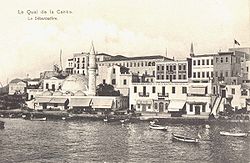 The old harbour during the Ottoman era.
The old harbour during the Ottoman era.During the opening months of the Cretan War (1645–1669) the city's walls did not prevent an Ottoman army from capturing it from the Venetians after a two-month siege. Many Cretans fled to escape persecution, many others were slaughtered or converted to Islam, while numerous Turkish Muslim settlers arrived changing the ethnic mix of the city.[4]
Muslims resided mainly in the eastern quarters, Kastelli and Splantzia, where they converted the Dominican church of St Nicholas into the central Sovereign's Mosque (Turkish: Hünkar Camısı).[5] They also built new mosques such as the Küçük Hasan Pasha Mosque or Yali Mosque on the harbour.[6] Public baths (hamam), and fountains were a feature of the Ottoman city.[7] The pasha of Crete resided in Chania.[8]
The city remained under Ottoman control despite fighting during the Greek War of Independence (1821-29), the Cretan Revolt (1866–1869) and the Cretan Revolt (1878). Due to the island's mixture of Muslim and Christian residents, Crete was the subject of international debate between the European great powers, most notably at the Treaty of Berlin (1878) which resulted in the Pact of Halepa. During the 19th and early 20th century inter-ethnic violence on Crete eventually led to the mass migration of the island's local Muslim population to other Mediterranean islands or coastal cities. Mass conversions also occurred. The population exchange between Greece and Turkey in 1922 resulted in the deportation of the island's last Muslim residents.[9]
Modern era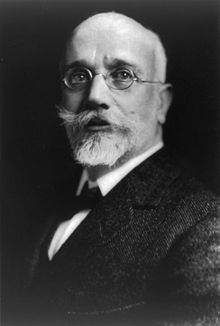 Eleftherios Venizelos (1864–1936), major political figure of the 20th century European scene, was born in Chania.
Eleftherios Venizelos (1864–1936), major political figure of the 20th century European scene, was born in Chania.In 1898, during the final moves towards independence and enosis—union with Greece—the Great Powers made Chania the capital of the semi-autonomous Cretan State ("Kritiki Politeia"), with Prince George of Greece, the High Commissioner of Crete living here. During these years Crete issued its own stamps and money. This was a very important transitional period when, no longer an isolated vilayet of the Ottoman Empire, the city became more cosmopolitan and flourishing, regaining its role as the crossroad of civilizations, influenced by Europe as well as by the East. Many important buildings were built during this era, intellectual and artistic societies were created and a new class of local aristocracy brought a different atmosphere to the everyday life of the town. The district of Halepa has many fine neoclassical embassies and consulates dating from this period.
However the main goal was enosis with Greece, which came after Eleftherios Venizelos's constant opposition to Prince George's rule over Crete. The series of conflicts includes the Therisos revolt in 1905, which overthrew Prince George and brought Alexandros Zaimis to rule Crete. Finally, in 1908, Venizelos managed to establish a revolutionary government, recognized by the Great Powers. His later election as the prime minister of Greece (1910) eventually led to Crete's union with Greece on 1 December 1913, following the Balkan Wars. The Greek flag was raised for the first time at Fort Firka in the Old Harbour in the presence of Venizelos and King Constantine.
Due to the popularity of Venizelos, Chania as with most of Crete remained staunchly pro-Venizelist, pro-Liberal and later pro Republican in the National Schism and the interwar period. The only attempt to overthrow the monarchist Metaxas Regime occurred in the city with the failed 28 July 1938 uprising.
Chania in World War IIAnother important period for the city of Chania was the invasion and occupation by German forces during World War II. The British force that faced the German paratroopers during the Battle Of Crete in 1941, had artillery elements over the hill of Dexameni in the south of the city. These elements bombarded the German forces in the Maleme airfield undetected, until they ran out of ammunition. George II of Greece stayed in a villa near the village of Perivolia outside Chania before escaping to Egypt. Part of the city was bombed and a significant proportion of the area's population was either executed or imprisoned due to participation in the resistance against the German rule. The Jewish community of Chania was also eliminated during the German occupation. Most of them were transported off the island by the Nazi occupiers in 1944. Tragically, a British torpedo sank the ship Tanais, which was carrying most of the Jewish prisoners.
Post–World War II eraThe city of Chania slowly regained its normal pace of development during the 1950s, trying to overcome the difficulties that the war had left in its aftermath. During the 1970s, Crete became a major tourist destination for Greek and international tourists, something that gave a significant boost to the city's economy and affected the everyday life and the overall culture of the locals. The capital of Crete was moved to Heraklion in 1971.
Since the 1990s, the city of Chania has entered a new era, mainly due to construction and infrastructure such as a new airport, port and educational facilities, and it is considered a prominent tourist resort in the Mediterranean Sea.




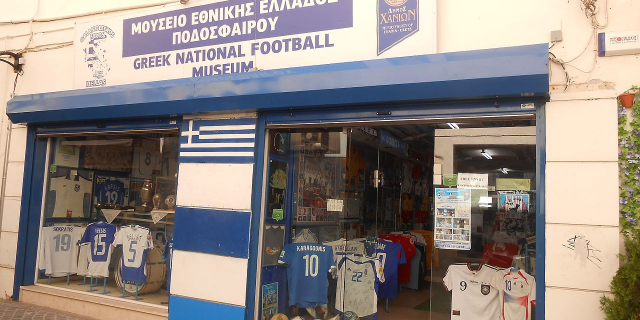

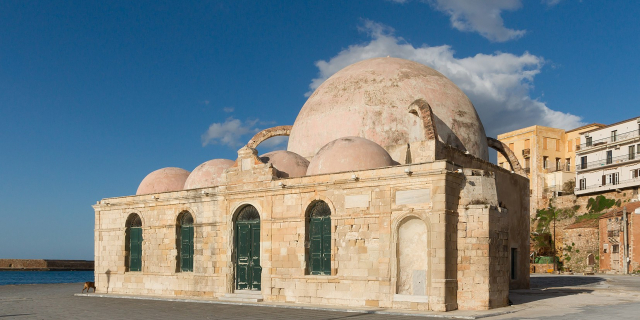

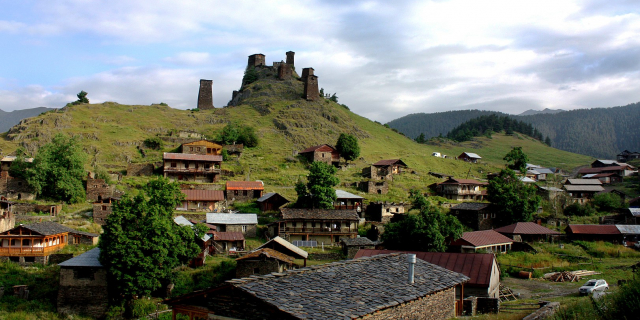


























Add new comment